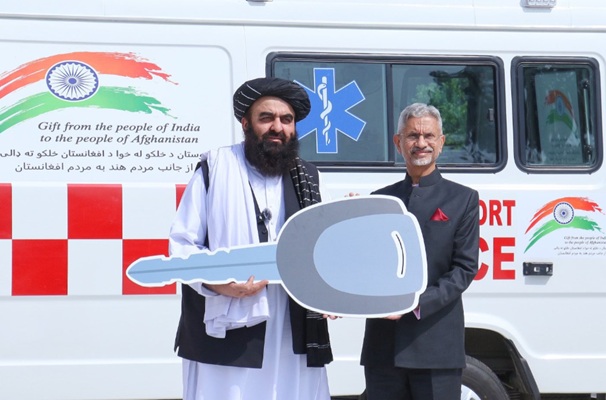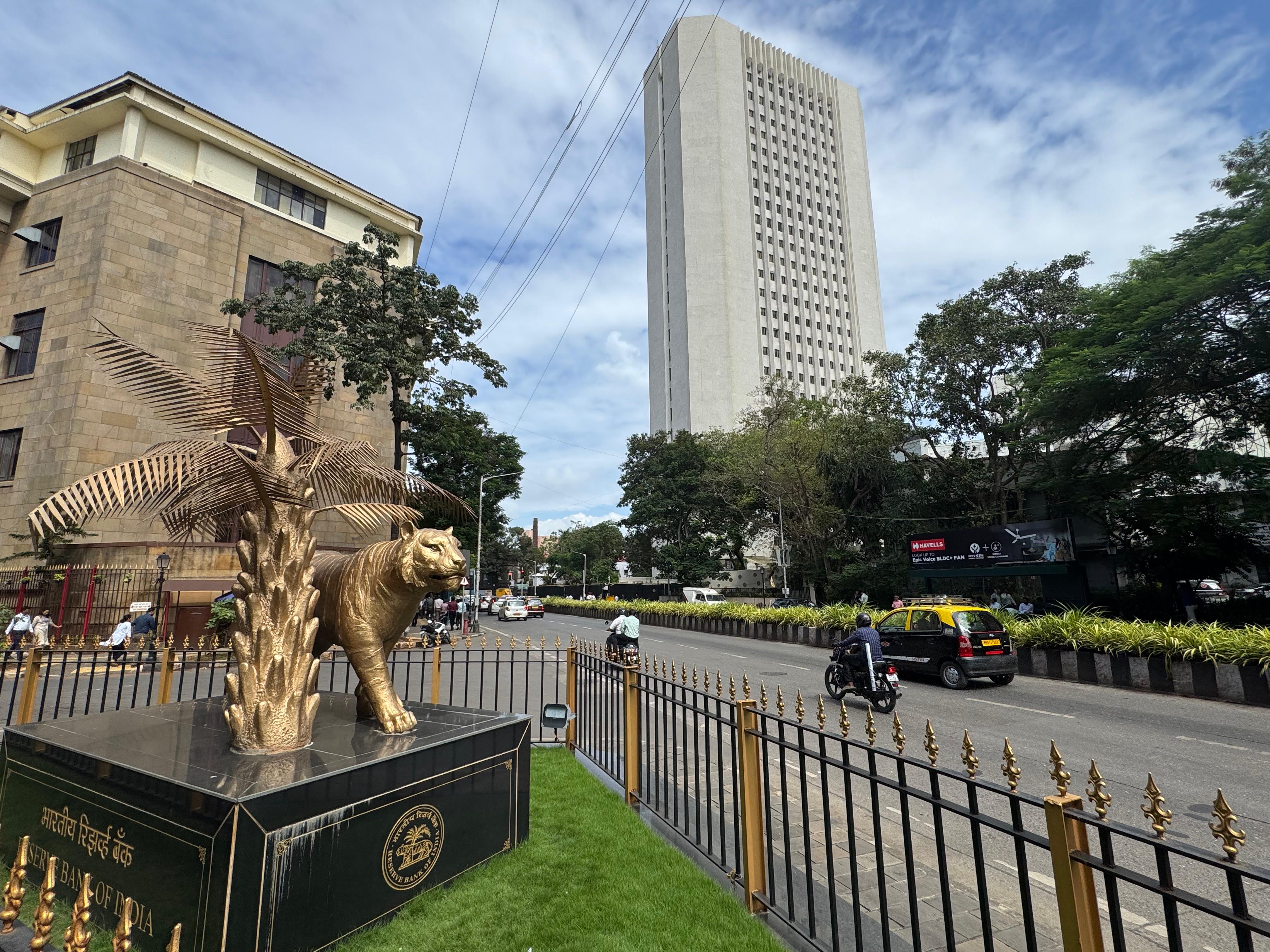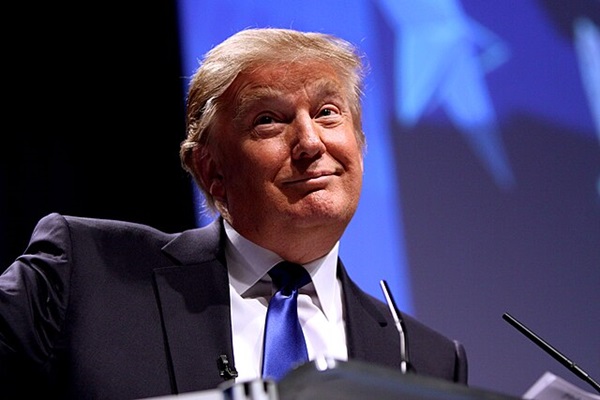.png)
Afghanistan Standoff: The Shifting Sands Of Pakistan’s Strategic Depth
Pakistan’s long-cherished notion of strategic depth in Afghanistan has collapsed. India, through quiet resilience and measured engagement with the Taliban, has reclaimed moral and strategic space.


By Lt Gen Syed Ata Hasnain (Retd)
Lt Gen Syed Ata Hasnain is a former Commander of India’s Kashmir Corps and Chancellor of the Central University of Kashmir.
October 16, 2025 at 7:18 AM IST
When Amir Khan Muttaqi, the Taliban’s Acting Foreign Minister, arrived in India, few noticed the depth of symbolism the visit carried. It was not just a diplomatic engagement, it was a strategic statement. For Pakistan, which for decades manipulated Afghanistan as its geopolitical underbelly, the sight of a senior Taliban official being received in New Delhi represented a moral and psychological defeat. Islamabad’s carefully cultivated notion of ‘strategic depth’ has been overturned; its own western flank now trembles with instability while India quietly re-emerges as a credible interlocutor in Kabul.
The roots of this transformation lie in Pakistan’s own duplicity. The 2008 attack on the Indian Embassy in Kabul, which killed Indian diplomats and security personnel, remains a dark milestone. Planned with ISI complicity and executed through Taliban proxies, it was intended to send a chilling message: India’s growing goodwill in Afghanistan through its roads, schools, and hospitals would not be tolerated. The campaign of intimidation worked temporarily. When the US withdrew from Afghanistan in 2021, India chose not to maintain a full diplomatic mission, fearing precisely the kind of targeted violence that Pakistan had once orchestrated. But the arc of events has now turned with poetic justice.
The Taliban regime in Kabul, while far from friendly to India, has demonstrated remarkable indifference to Pakistan’s expectations. Pakistan’s hope that an Islamist government next door would be pliant has proven misplaced. Instead, the Taliban’s relationship with the Tehreek-e-Taliban Pakistan has emerged as the central irritant. The Afghan Taliban insists that it does not control or support the TTP, yet the ideological sympathy and operational alignment between them are unmistakable. Every TTP attack inside Pakistan is a painful reminder that its old proxies are now beyond control.
The issue of the Durand Line, which Pakistan has long claimed as the de facto international border, has deepened the rupture. The Taliban has refused to accept it, calling it an artificial colonial construct that divides the Pashtun homeland. Skirmishes, destruction of fencing, and frequent cross-border firefights have turned what Islamabad once called its “defensive depth” into a zone of constant insecurity. Pakistan’s western frontier is now as volatile as its eastern one — an outcome entirely of its own making.
For Pakistan’s military establishment, this represents a profound psychological reversal. The idea of Afghanistan as a subordinate state, providing both physical refuge and strategic leverage, is central to the Army’s institutional self-image. It underpinned decades of military planning and diplomatic posture. The collapse of that construct has left a void in the Army’s strategic imagination. Field Marshal Asim Munir, who took over at a time of unprecedented domestic political turbulence, faces a crisis of both credibility and control. Unlike his predecessors, who could calibrate pressure across multiple fronts — from terrorists to media — Munir presides over fragmentation. The military’s monopoly on narrative and power is being openly contested by extremist groups, populist clerics, and a divided political class.
Pakistan’s internal security environment is, consequently, in freefall. Khyber Pakhtunkhwa and Baluchistan, both long neglected, have again become battlegrounds. The Tehreek-e-Labbaik Pakistan has paralysed Islamabad and Rawalpindi more than once, demonstrating the fragility of state authority even in the heartland. The irony is bitter; Pakistan fought two major counterterrorism operations — Operation Zarb-e-Azb (2014–2017) and Operation Radd-ul-Fasad (2017–2018) — aimed at neutralising precisely the networks that are now resurging. Billions were spent, and thousands of lives lost, yet the absence of sustained governance, economic inclusion, and developmental follow-up in these areas has led to relapse. Militancy thrives not merely on ideology, but on the vacuum of governance. A lesson Islamabad has consistently ignored.
While its borders burn, Pakistan’s leadership seems preoccupied elsewhere. Prime Minister Shehbaz Sharif’s government has invested heavily in courting Washington and Riyadh, hoping to repair frayed ties and attract financial bailouts. The outreach to Saudi Arabia and the United States reflects desperation rather than strategy. While Pakistan’s leaders and diplomats celebrate handshakes in foreign capitals, its western border towns are witnessing daily violence, and its economy continues to teeter on collapse. Even as it struggles to pay for fuel and food imports, Islamabad appears more concerned about optics than outcomes.
The attempt to clutch at the straws of relevance being occasionally offered by Donald Trump’s rhetoric in the US only underscores this desperation. Pakistan’s establishment looks upon this opportunity to reinsert itself into Washington’s strategic calculus. Yet such hopes are hollow. The global order has moved beyond the binaries of the War on Terror. Pakistan’s leverage has diminished; its credibility as a stabilising actor is almost non-existent.
Externally and internally, Pakistan today stands at a point of convergence, where all its fault lines meet. The economy is weak, the polity fractured, and the security environment in virtual flames. The state’s over-militarisation of governance has hollowed its institutions, while its misplaced ideological posturing has alienated even traditional allies. For India, this is not a moment for triumphalism but for quiet confidence. It has regained strategic credibility in Afghanistan without overstretching itself.
India’s cautious but steady engagement with the Taliban — maintaining contact, providing humanitarian aid, and avoiding overt recognition — has yielded dividends. The Taliban’s leadership, particularly those governing from Kabul rather than Kandahar, are pragmatic enough to see the value of engaging New Delhi. They recognise India’s legacy of development projects that benefitted ordinary Afghans, something Pakistan’s presence never achieved. Thus, while Pakistan’s policy has been one of coercion and control, India’s approach has been of credibility and continuity.
This reversal has significant psychological implications for the Pakistan Army. For decades, its institutional confidence rested on the belief that it could shape Afghanistan’s politics and deny India any foothold there. Today, it watches from the sidelines as Kabul pursues independent diplomacy and India quietly re-enters the conversation. The loss of this ‘strategic depth’ has left Rawalpindi anxious and reactive. Unable to dominate Afghanistan, unable to stabilise its western provinces, and unable to revive its economy, Pakistan’s military is running out of levers to pull.
Such moments in Pakistan’s history have often led to misadventure, a diversionary crisis engineered to redirect domestic frustration outward. Kashmir, though relatively quiet, remains the most convenient theatre for that. The renewed talk of “Sindoor 2.0”, a reference to rekindling subversion in Jammu & Kashmir, must be viewed through that lens. But the conditions that once enabled Pakistan’s covert ventures no longer exist. India’s counterintelligence, its local outreach, and the fatigue within separatist networks have significantly raised the cost of infiltration and agitation.
India, through patience and calibrated diplomacy, has turned the tables — not through confrontation but through consistency. Afghanistan, once seen as Pakistan’s buffer against India, now represents India’s quiet strategic advantage. History has indeed come full circle. The fires that Pakistan once stoked on Afghan soil now burn along its own borders, and the depth it once sought in another’s territory has been reclaimed, ironically, by India in the realm of credibility, resilience, and restraint. The visit of Amir Khan Muttaqi must be followed up by pushing all the right buttons in the domain of diplomacy. Humanitarian support, financial and development aid, soft power and medical visas, are what support India's pursuit to promote India-Afghanistan relations.



